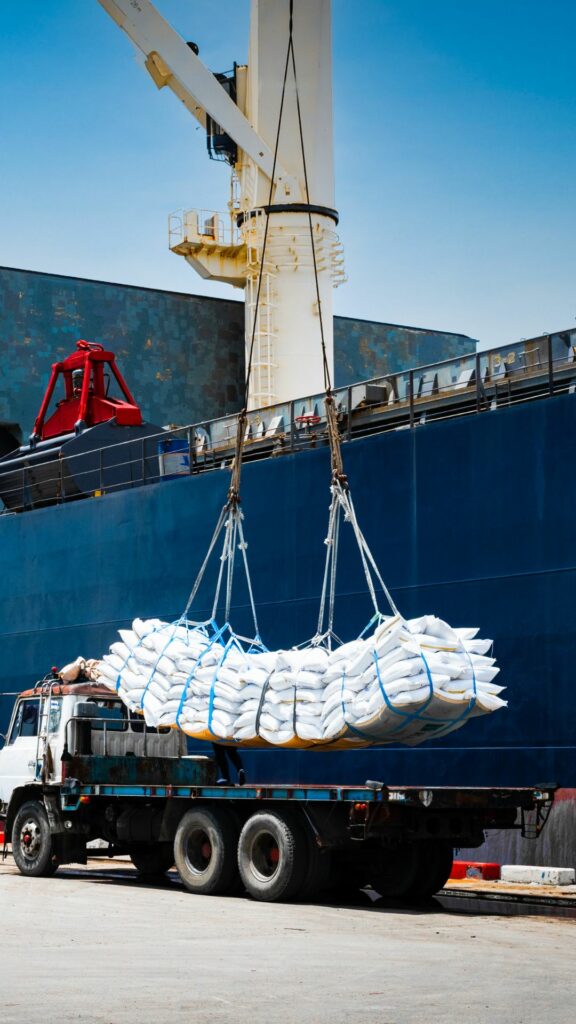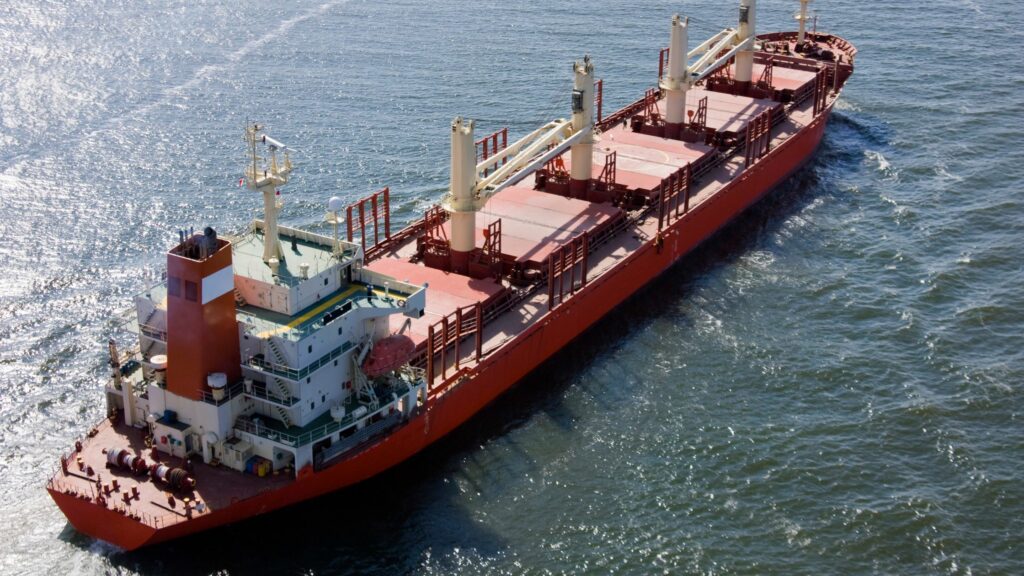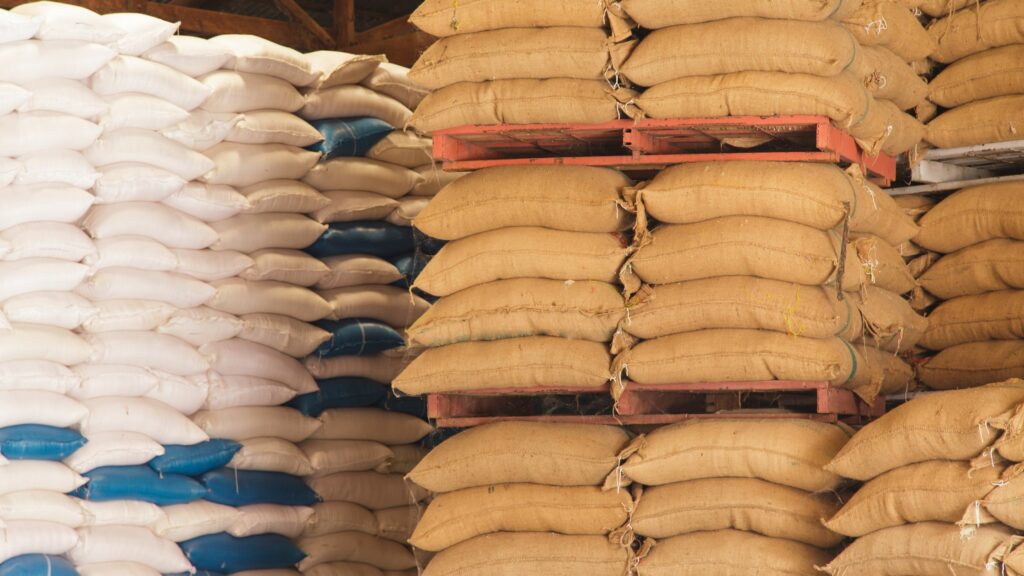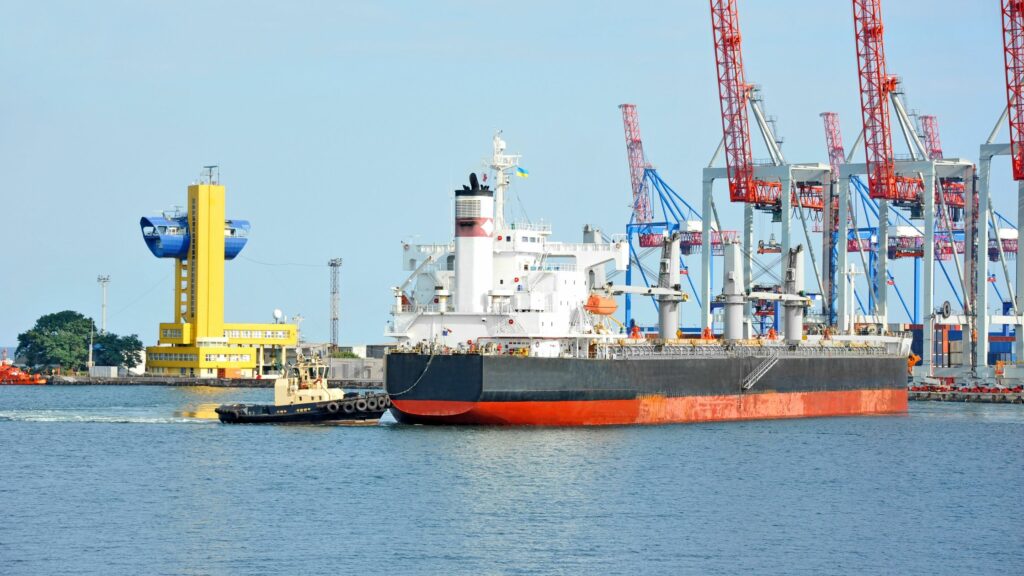Physical Address
304 North Cardinal St.
Dorchester Center, MA 02124
Sugar bulk shipping, often overshadowed by the oil and container shipping sectors, plays a pivotal role in the global economy with its unique challenges and strategic importance. This sector distinguishes itself through its specialized logistics, handling, and transportation requirements, ensuring that this essential commodity reaches markets worldwide efficiently and safely. This distinct segment of maritime trade offers a fascinating glimpse into the intricacies of shipping one of the world’s most consumed commodities.

Key methods of sugar transportation include the use of bulk carriers and specialized handling equipment designed to preserve the quality and integrity of sugar, from raw to refined forms. Each type of sugar – granulated, raw, and brown – demands specific considerations in terms of storage, handling, and transport conditions to maintain its quality during long voyages. Delving deeper, the nuances of sugar bulk shipping reveal a complex interplay of production techniques, global trade routes, and the economic impact on producing and consuming nations.
The subsequent sections will explore these elements in detail, shedding light on the sophisticated world of sugar bulk shipping and its critical role in keeping the sweetener flowing to every corner of the globe. This exploration will enrich the understanding of how sugar bulk shipping sustains the global sugar trade, highlighting its challenges, innovations, and vital contribution to the world’s economy.
Sugar, a fundamental commodity in the global food industry, serves as more than just a sweetener. It encompasses various forms, each with its own unique characteristics and applications. Granulated sugar, the most common type, is celebrated for its fine crystals and versatility, making it a staple in culinary applications, in a very similar way to salt for industrial use.
Raw sugar, characterized by its less processed nature, retains molasses, offering a distinct flavor profile. Meanwhile, brown sugar, which can be either partially refined or produced by adding molasses to white sugar, provides a moist texture and rich taste. These types are central not only to domestic consumption but also to industrial food production, underscoring sugar’s indispensability in daily diets and culinary practices around the world.
The significance of sugar transcends its culinary uses, playing a pivotal role in the global economy. As a heavily traded commodity, the production and export of sugar are critical for the economies of many countries, influencing global trade patterns and shaping international relations. The specialized segment of maritime trade, dedicated to shipping sugar in bulk, underscores the complexity and importance of this commodity in satisfying the world’s sweetening needs.
Understanding the varieties of sugar, their uses, and their value in global commerce provides insight into sugar’s integral role in both the food industry and the broader economic landscape, highlighting its importance as a key player in global trade.
Sugar’s role in global trade is both vital and expansive, serving as a significant economic driver for numerous countries. Its importance is twofold: as an essential dietary item and as a foundational ingredient across various industries, making it one of the most extensively traded commodities on the planet. The trading of sugar not only influences global market dynamics but also impacts agricultural practices in sugar-producing nations and shapes international trade policies.
Sugar trade patterns are a mirror to the broader economic currents, providing insights into global economic health. This role in global commerce underscores the economic significance of sugar-producing regions and illuminates the intricate balance required to align production capacities with the global demand for sugar.
In the realm of the dry bulk shipping industry, sugar stands as both a logistical challenge and a significant opportunity. Its integration into this sector is marked by the need for specialized handling and transportation techniques, given its susceptibility to moisture and the risk of contamination. Bulk carriers, tailored for transporting vast quantities of sugar without packaging, from raw to its refined form, play a pivotal role in preserving the quality and integrity of sugar during transit.
Handysize, Supramax, and Panamax vessels are commonly employed for sugar transport, each offering different capacities ranging from 20,000 to 80,000 deadweight tonnes (DWT), catering to various shipment sizes and port restrictions. These carriers often feature specialized ventilation systems to control humidity and temperature, crucial for preventing sugar from caking or deteriorating. The movement of sugar in bulk showcases the strategic importance of maritime trade routes and key ports, essential in the global distribution of sugar.
This aspect of shipping not only highlights the logistical expertise required to globally transport sugar but also underscores the dry bulk shipping industry’s essential function in keeping the supply chain for this crucial commodity intact. Addressing the challenges of moisture control, carriers and logistics providers employ innovative solutions such as waterproof hatch covers and humidity-controlled holds to mitigate the risk of moisture damage. These efforts ensure that sugar, a commodity vulnerable to quality degradation when exposed to moisture, arrives at its destination in optimal condition, highlighting the industry’s commitment to maintaining the integrity of this vital food ingredient.
Sugar, a cornerstone in both culinary and industrial realms, manifests in various types and subtypes, each distinguished by its unique properties and uses. Granulated sugar, the most ubiquitous form, is prized for its fine, crystal-like texture and unparalleled solubility, making it a universal sweetening agent. Raw sugar, characterized by a slight molasses content due to its minimal processing, offers a more complex flavor profile, often refined further for various applications.
Brown sugar, which comes in light and dark varieties, is enriched with molasses, imparting a moist texture and a deep, caramel-like essence. These diverse forms of sugar not only cater to a wide array of culinary requirements but also underscore sugar’s pivotal role in shaping dietary habits and food production across the globe. Recognizing the nuances among these sugar types enriches our understanding of sugar’s multifaceted contributions to gastronomy, food processing, and consumer preferences.
Granulated sugar, known for its fine crystals, is the quintessential form of sugar, lauded for its ability to dissolve swiftly. This quality makes it exceptionally suitable for a broad spectrum of culinary applications, from sweetening beverages to creating the perfect texture in baked goods. Its role in the global sugar trade is indispensable, as it meets the extensive demand in both domestic and industrial settings, highlighting its foundational presence in the culinary world.
Raw sugar presents a more natural alternative, characterized by its golden hue and minimal processing. This type retains a hint of the natural molasses, offering a deeper flavor than its fully refined counterpart. It serves as a vital link in the sugar supply chain, often transported in bulk to refineries for further processing.
Raw sugar’s robust flavor makes it a preferred choice for enhancing the taste profile of various recipes, adding a nuanced sweetness to culinary creations.

Brown sugar, distinguished by its molasses content, comes in two varieties: light and dark. The molasses not only imparts a moist texture but also a rich, caramel flavor that is integral to countless desserts and baked goods. The choice between light and dark brown sugar allows chefs and home cooks to fine-tune the flavor intensity and color of their dishes, showcasing brown sugar’s versatile role in enriching culinary experiences.
Sugar production and exportation are global endeavors, with a few countries leading the charge due to their optimal climatic conditions and agricultural prowess. Brazil is at the forefront, not only as the world’s largest sugar producer but also its top exporter, capitalizing on its expansive agricultural lands and favorable weather. India follows closely, its vast cultivation areas and advanced farming techniques allowing it to meet both its substantial domestic consumption and significant export demands.
Thailand, Australia, and China also play vital roles in the sugar market, each contributing large volumes to the global sugar supply. These nations are pivotal in ensuring the stability of the global sugar trade, exporting to regions with insufficient production capabilities. Their collective efforts in the cultivation and bulk shipping of sugar underscore the intricate network of global agricultural trade, ensuring the continuous flow of this essential commodity worldwide.
To provide a clearer picture of the global sugar trade landscape, including specific data on the volume of sugar produced and exported by leading countries, the following table is presented:
| Country | Annual Sugar Production (Million Metric Tons) | Main Export Destinations |
|---|---|---|
| Brazil | 39.9 | India, China, Russia, Saudi Arabia, United Arab Emirates |
| India | 30.5 | Bangladesh, Sudan, Somalia, Iran, United Arab Emirates |
| Thailand | 11.3 | China, Indonesia, Malaysia, South Korea, Japan |
| Australia | 4.8 | Indonesia, South Korea, Malaysia, Japan, New Zealand |
| China | 10.2 | South Korea, Uzbekistan, Malaysia, Russia, Myanmar |
Recent trends indicate a shift in production due to environmental factors such as climate change, which has affected rainfall patterns and temperatures, impacting sugar yields. Economic factors, including changes in global sugar prices and trade policies, have also influenced production volumes and export strategies. This detailed overview highlights the significant role of these countries in the global sugar market, underscoring their contributions to meeting worldwide demand for this essential commodity.
The global transportation of sugar is predominantly facilitated through bulk carriers, specialized ships adept at moving large quantities of unpackaged commodities. These vessels are the backbone of the sugar trade, efficiently connecting producers with international markets. For sugar, particularly the refined variety that demands higher protection, container shipping also plays a crucial role.
In this method, sugar is either bagged or directly loaded into containers, safeguarding it from moisture and contamination during its journey. Both transportation methods are essential, underpinning the logistics of the global sugar trade and ensuring that this vital commodity reaches consumers and industries worldwide in optimal condition. To add specificity and enhance understanding, the following table details the types of ships used, their advantages, challenges, and how sugar is prepared for transport:
| Ship Type | Description | Advantages | Challenges | Preparation for Transport |
|---|---|---|---|---|
| Bulk Carriers | Ships specifically designed to transport unpackaged bulk cargo. | – High capacity – Cost-effective for large volumes – Versatile for different sugar types | – Risk of moisture exposure – Requires specialized loading and unloading equipment | Sugar is loaded directly into the ship’s hold. Bulk carriers are often used for raw and granulated sugar. |
| Handysize | Smaller bulk carriers with a capacity of 20,000 to 35,000 DWT. | – Suitable for smaller ports – Greater flexibility in scheduling | – Limited capacity compared to larger vessels – May require more trips for large shipments | Similar to bulk carriers, but often used for shorter or regional routes. |
| Panamax | Bulk carriers that can pass through the Panama Canal, up to 80,000 DWT. | – Access to global routes via the Panama Canal – Economies of scale for large shipments | – Restricted by canal dimensions – Higher operational costs compared to smaller vessels | Ideal for long-distance, high-volume shipping of sugar, especially between major production and consumption areas. |
| Container Ships | Vessels designed to carry containerized cargo. | – Protects sugar from moisture and contamination – Flexible for mixed cargo shipments | – Higher cost per ton compared to bulk carriers – Requires additional packaging | Sugar is bagged or placed in containers, which are then loaded onto the ship. Used for refined sugar. |
This detailed breakdown provides a clearer picture of how sugar is transported globally, highlighting the importance of choosing the right shipping method based on the type of sugar, destination, and volume of the shipment.
Efficient loading and unloading procedures are critical in the sugar bulk shipping industry, ensuring the quality and integrity of the sugar are preserved from origin to destination. Specialized equipment, such as conveyors and grabs, plays a pivotal role in handling sugar in bulk, effectively minimizing exposure to environmental elements and preventing contamination. When it comes to refined sugar, transported in bags or containers, meticulous attention is dedicated to maintaining the integrity of the packaging, safeguarding the sugar against moisture and other contaminants.

Adherence to strict safety protocols is paramount, safeguarding both the cargo and the personnel involved in these operations. These procedures are essential not only for preserving the sugar’s quality but also for enhancing the efficiency and speed of port operations, thereby facilitating timely deliveries to meet global demands.
The bulk transportation of sugar necessitates the use of specialized equipment to ensure efficient, safe, and hygienic handling. Conveyors are widely utilized for their capability to move large volumes of sugar seamlessly, minimizing manual handling and the risk of contamination. Grabs and hoppers play a key role in transferring sugar to and from the ship’s hold, offering precision and reducing spillage.
For bagged sugar, forklifts and pallet jacks are indispensable, carefully maneuvering the bags to prevent any damage. Innovations in this area include automated conveyor systems that adjust speed based on the loading rate, and smart forklifts equipped with sensors to prevent collisions and ensure precise placement of cargo. These technological advancements have significantly improved the efficiency and safety of sugar handling operations.
This equipment is fundamental in maintaining the sugar’s quality throughout the loading and unloading processes, ensuring that it remains free from contamination and physical damage.
Proper storage and handling are critical for maintaining the quality and safety of sugar from production to consumption. Storage facilities for sugar are meticulously designed to ward off moisture and pests, the primary adversaries of sugar quality. Silos and warehouses, equipped with advanced temperature and humidity control systems, serve as the mainstay for bulk sugar storage, creating an optimal environment that curtails the risk of clumping and contamination.
When it comes to handling, stringent hygiene protocols are enforced, utilizing specialized conveyance systems that shield sugar from external contaminants. These comprehensive measures are vital, ensuring that sugar remains pristine and high-quality throughout its journey in the supply chain, safeguarding this indispensable commodity for end-users.
The storage of sugar necessitates stringent control over humidity and temperature to avert clumping and degradation. Storage facilities need to be completely waterproof and free from pests, ensuring that moisture and external contaminants cannot compromise the sugar. Silos and warehouses, tailored for sugar storage, are equipped with systems to monitor and regulate environmental conditions meticulously.
These facilities are crucial in preserving the sugar’s pristine condition and extending its usability.
Throughout storage and transit, sugar is managed with the highest standards of care to preserve its quality. Conveyance systems designed for bulk sugar minimize direct contact, significantly reducing contamination risks. During transit, sugar is protected in sealed containers or dedicated bulk carriers, safeguarding it from environmental exposure.
Stringent hygiene and safety protocols guide every handling step, from the initial loading to the final unloading, ensuring the sugar remains uncontaminated and intact.
Mitigating risks for sugar storage and transportation involves a comprehensive strategy aimed at preventing contamination, moisture ingress, and physical damage. Regular inspections and maintenance of both storage facilities and transport vehicles are vital to keep them in prime condition. Personnel training in proper handling techniques and adherence to safety protocols reduces the likelihood of human error.
Implementing quality control checks at critical points in the supply chain allows for the early identification and correction of potential issues, ensuring the integrity of the sugar from production to delivery.
The global trade and transportation of sugar are governed by a comprehensive framework of international regulations, ensuring the commodity’s safety, quality, and equitable distribution. These regulations are crucial for maintaining the integrity of the global sugar supply chain, facilitating cross-border trade while adhering to international safety and health standards. Key regulations include the World Trade Organization (WTO)‘s sanitary and phytosanitary (SPS) measures, which impact how sugar is produced and traded globally.
Additionally, sugar is subject to various customs regulations across countries, aimed at controlling its import and export to prevent disease and pest proliferation. The International Maritime Organization (IMO) sets specific guidelines for the maritime transport of bulk sugar, including standards for ship structure and safety equipment.
| Regulation/Agreement | Description | Impact on Sugar Trade |
|---|---|---|
| WTO Sanitary and Phytosanitary (SPS) Measures | Ensure food safety and animal/plant health standards. | Affects production and trade practices, ensuring sugar meets health and safety standards. |
| Customs Regulations | Vary by country; control import/export to prevent diseases and pests. | Influences trade flows, with tariffs and quotas affecting market access and prices. |
| International Maritime Organization (IMO) Guidelines | Provide standards for ship structure and safety for bulk carriers. | Ensures safe and efficient transport of sugar across international waters. |
| Sugar Protocol within the ACP-EU Partnership Agreement | Offers preferential access for sugar from African, Caribbean, and Pacific (ACP) countries to EU markets. | Stabilizes prices and supply from ACP countries to the EU, influencing global sugar trade dynamics. |
| Codex Alimentarius International Food Standards | Developed by the FAO and WHO, sets global food safety and quality standards. | Sugar must meet these standards to be traded internationally, ensuring consumer safety. |
| Global GAP (Good Agricultural Practices) | Certification system for farms ensuring sustainable and safe agriculture practices. | Impacts sugar production methods, influencing trade eligibility based on sustainability and safety criteria. |
The transportation of sugar on a global scale brings to the forefront several ecological concerns that demand immediate attention. Among these, carbon emissions from maritime shipping vessels stand out, contributing significantly to the accumulation of greenhouse gases and the broader narrative of climate change. Equally pressing is the issue of aquatic pollution, stemming from potential spills and the discharge of ballast water, which carries the risk of introducing invasive species into new marine environments, thereby disrupting local ecosystems.
Furthermore, the expansion of sugar production often entails land use changes and deforestation, particularly in areas of high biodiversity, posing a threat to wildlife habitats and biodiversity. The agricultural practices associated with sugar cultivation, such as intensive water use and pesticide runoff, can lead to further environmental degradation, affecting local water bodies and soil health. These practices not only challenge the sustainability of local ecosystems but also raise concerns about the long-term viability of sugar production areas.
Addressing these environmental challenges is crucial for the sustainability of the sugar industry, necessitating a collective effort to adopt greener practices and technologies throughout the supply chain.
In the realm of sugar shipping, several common challenges necessitate meticulous planning and robust strategies. A paramount issue is moisture exposure, which can lead to clumping and spoilage, severely affecting the sugar’s quality. Equally critical is the risk of contamination, either from other cargoes or pests, which can compromise the purity of the sugar.

The sector also faces logistical complexities, such as coordinating shipping schedules and ensuring the availability of appropriate bulk carriers, to efficiently meet the global demand. Additionally, navigating the maze of regulatory compliance across various jurisdictions presents its own set of challenges, with each country’s trade laws and customs procedures adding layers of complexity. Successfully addressing these challenges is vital for safeguarding the integrity and ensuring the smooth operation of the global sugar supply chain.
The sugar shipping market is ripe with potential opportunities, driven by the ever-changing landscape of global trade and consumer demand. Emerging markets stand out as significant growth areas, with their increasing appetite for sugar bolstering the need for imports. The advent of technological advancements in shipping and logistics, including automation and the integration of blockchain technology, offers prospects for streamlining operations, enhancing efficiency, and ensuring greater traceability.
Moreover, the shift towards sustainability in global trade practices opens avenues for innovations in environmentally friendly shipping solutions and the adoption of alternative, cleaner fuels. Seizing these opportunities will require stakeholders to navigate the complexities of the market with strategic foresight and innovative approaches.
Looking ahead, the future of sugar shipping appears cautiously optimistic, shaped by a complex interplay of demand, regulatory challenges, and innovation. The steady global demand for sugar, fueled by both its traditional uses and industrial applications, lays a solid foundation for the market’s expansion. Yet, this potential is moderated by the pressing need to adapt to stricter environmental regulations and the imperative for more sustainable shipping practices.
Experts forecast that changes in consumer behavior, particularly a trend towards reduced sugar consumption due to health concerns, could influence demand patterns, potentially leading to shifts in global trade flows. Technological advancements in shipping, such as the use of AI for logistics optimization and the development of more energy-efficient vessels, are expected to enhance operational efficiency and reduce environmental impact. Furthermore, shifts in global trade policies, driven by a growing emphasis on sustainability and fair trade, could reshape the regulatory landscape, impacting sugar trade dynamics.
Challenges such as potential trade policy shifts and market volatility also present hurdles that demand agility and strategic planning from industry participants. The industry’s response to these challenges, including the adoption of innovative technologies and sustainable practices, will be crucial in navigating the future landscape. Despite these obstacles, the sector’s ongoing technological evolution and strategic forays into new markets suggest a vibrant and dynamic future for the sugar shipping industry.